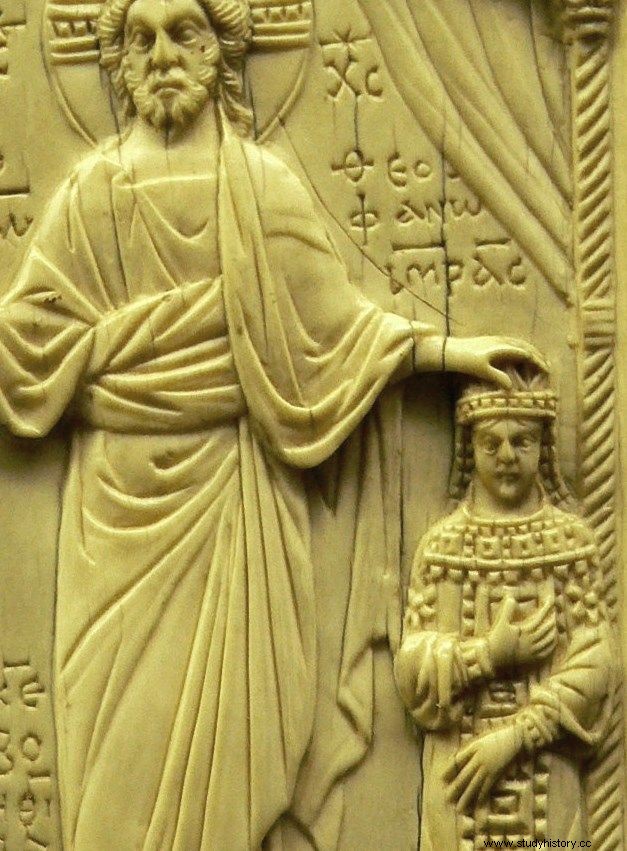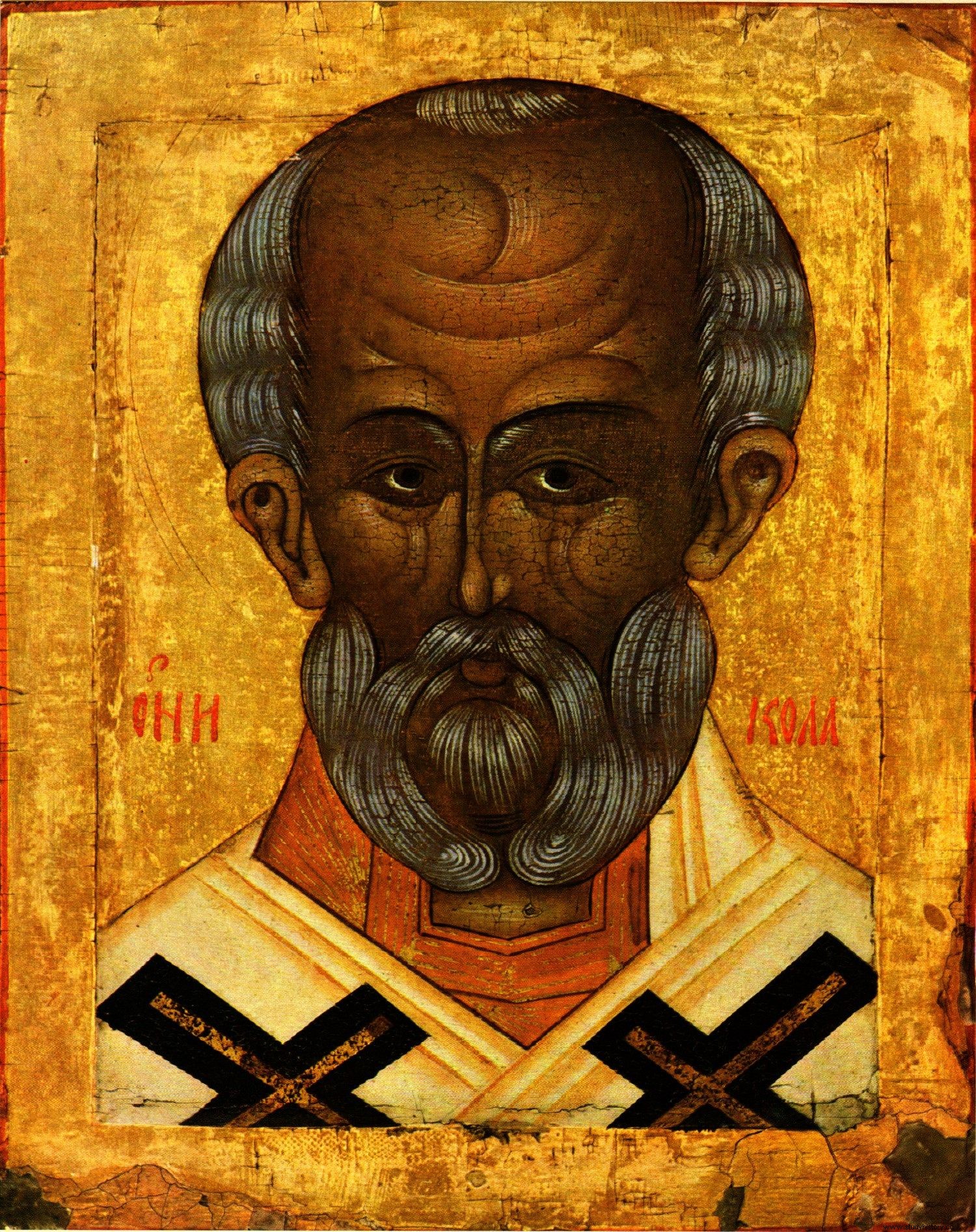A thousand years ago, almost no one believed in Santa Claus. It changed because of one family. And some extraordinary women, among whom was ... the first Polish queen!
Until the 10th century, the cult of the most popular saint today did not extend beyond the borders of Asia Minor. He wasn't particularly attractive either. Stories about Mikołaj sound (and they sounded also then!) Extremely clichéd. The son of wealthy parents renouncing his fortune to help widows and orphans ... Like a martyr, but it is not known for what cause. Like a bishop, but it's hard to say from what century. A saint definitely second class ... at least until there was an interest in him at the court in Constantinople.
Holy One Family
In the 10th century, the new fashion brought him to the top. One of the Byzantine emperors even stated that nothing makes Satan so angry as celebrating St. Nicholas' Day. And this opinion was shared by the young relative of the emperors, Teofano. When in 972 this Greek woman was engaged to the emperor of the west, Otto II, she took with her on the journey an icon representing the bishop of Mira. Thanks to her, the cult of the saint reached Germany. And this is important information, because one of the first children of believers in Nicholas was, in effect, the Empress's daughter, Matilda.

Empress Theophano and ... Jesus Christ. Binding of a codex from the 10th century.
The new patron very quickly settled in the Reich. But it was not as holy as it is today. If he was distributing gifts, he would only throw them into a few carefully selected chimneys in royal residences. The Ottonians were selfishly guarding Nicholas. It was their personal link with the supernatural world and a symbol of the dynasty's ties with Constantinople. In Germany of this era, only churches built at the behest of the ruling family could claim this exotic patron.
A generational tradition
This is exactly how Mikołaj was approached in the next, third generation. Matilda, married to the palatine of Rhein Ezon, gave birth to ten children. One of them was Rycheza - the wife of Mieszko II and daughter-in-law of the famous Bolesław the Brave. And at the same time:the first Polish queen. The cult of Nicholas settled in Poland at the beginning of the 11th century. At a time when the Czechs, Hungarians and Scandinavians had not even heard of Mira's bishop.

Thanks to the book by Kamil Janicki, you will learn about the history of the women who saved Poland. An uncompromising story of the fall of the Polish empire. Buy today with a discount on empik.com.
Thanks to Riches, several different chapels and churches dedicated to the martyr were built. Some may have been erected while she was still alive; others shortly after the death of the Palatine, but on her clear inspiration. These are mainly foundations in Małopolska, perhaps related to its youthful rule. The very old invocations of Saint Nicholas are known from Kraków, Sandomierz, Wiślica and Cieszyn. It is also worth mentioning the church in Giecz - perhaps the first ever construction initiative of Rycheza in the new homeland.
Name in green paint
Palatynówna not only brought the cult of the new saint to Poland, but also made it fashionable here. This is a great example of her determination and resourcefulness, because the duchess turned out to be insanely effective. Throughout the next century, Mikołaj was considered one of the most important patrons of the Piast dynasty. Its many churches are known. And what is important - they were all built by the rulers themselves, more or less consciously continuing the Ottonian tradition. In the 12th century, the district prince Mieszko III had an ornate paten made, on which he was depicted next to Saint Nicholas.

Santa Claus on a Ruthenian icon from the 16th century.
Bishop Mira was also continuously venerated at Wawel. In the calendar of the Kraków cathedral from the 13th century, the ceremony in his honor was marked in green. Only the most important saints could count on such a distinction. The patrons of the basilica, Saint Wenceslaus and Saint Stanisław, and ... precisely Nicholas. In the fourteenth century - a quarter of a millennium after the death of Riches - the guardian she brought from Germany even had his own altar at Wawel. Today, however, this personal saint of our heroine brings gifts to millions of Polish children. And who knows if he is not adding a few extra candies to their packages, remembering that in Poland he was welcomed with open arms for decades before his cult settled in the rest of Europe.
***
Women who gave Poland the crown. An uncompromising story about times of decline and moral decay. Striking silhouettes of great scoundrels. And a story that returns the dignity to the most important ladies in the history of the Polish Middle Ages. You can order Kamil Janicki's book "Damy z skazą" at empik.com today.
Selected bibliography:
The article was based on materials collected by the author during the work on the book "Damy z skazą. The women who crowned Poland " . Some of these items are shown below. Full bibliography in the book.
- A. Brückner, Nicolaus von Myra [in:] Theologische Realenzyklopädie , vol. 24, edited by G. Müller, G. Krause, Berlin 1994.
- K.N. Ciggaar, Western travelers to Constantinople. The West and Byzantium, 962–1204:Cultural and Political Relations , Leiden – New York – Köln 1996.
- R. Michałowski, Church of St. Nicholas in early Piast residential centers , "Society of Medieval Poland", vol. 6 (1994).
- R. Michałowski, Princeps founder. A study of the history of political culture in Poland in the 10th – 13th centuries , Warsaw 1993.
- G. Pac, Women in the Piast dynasty. The social role of Piast wives and daughters until the mid-12th century. A comparative study , Toruń 2013.
- M. Tomaszek, The monastery and its benefactors . Medieval narrative of Brauweiler Abbey and the family of Queen Riches , Krakow 2007.
- J.L. Wheeler, Saint Nicholas , Nashville 2010.
- G. Wolf, Kaiserin Theophanu, die Ottonen und der Beginn der St. Nikolaus-Verehrung in Mitteleuropa [in:] Kaiserin Theophanu. Prinzessin aus der Fremde - das Westreichs Grosse Kaiserin , edited by G. Wolf, Böhlau – Köln 1991.
